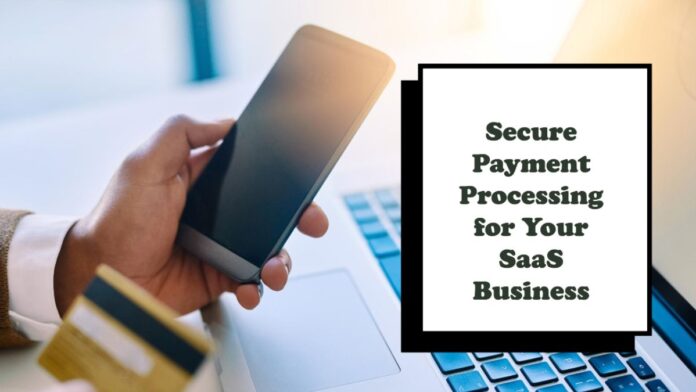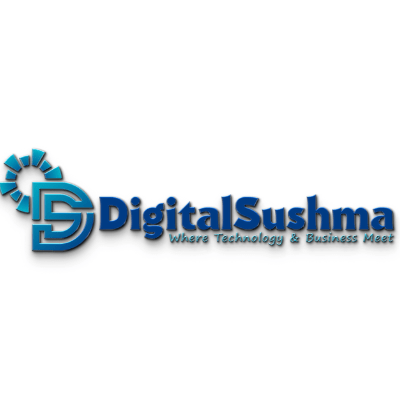Software as a Service (SaaS) has become an extremely popular business model in recent years. The subscription-based services offered by SaaS companies require specialized payment processing capabilities to manage recurring billing and subscription lifecycles. Selecting the right SaaS payment processing solution is crucial for streamlining operations, enhancing customer experience, and enabling business growth. This comprehensive guide examines the key benefits, common challenges, top providers, implementation best practices, and future trends related to SaaS payment processing.
What is SaaS Payment Processing?
SaaS payment processing enables the automated billing, payment collection, accounting, and revenue management processes required to run a subscription software business. It goes beyond standard payment gateways to include features like:
- Recurring billing management
- Subscription tracking
- Flexible pricing models
- Invoice generation
- Payment collection
- Accounting and reporting
- Revenue forecasting
- Customer subscription management portals
SaaS Payment Processing Benefits
Streamlined Billing and Invoicing Manually generating invoices and collecting customer payments every billing cycle is tedious and resource-intensive. SaaS payment solutions completely automate the billing process through flexible recurring schedule setup and payment method storage. Customers are correctly billed and invoices generated without any additional effort.
Enhanced Customer Experiences
Self-service account management portals allow customers to easily view billing history, update payment info, pause/cancel subscriptions, and make one-off purchases. The ability to change subscriptions mitigates involuntary churn from expired cards. Advanced dunning systems ensure customers are aware of any declined payments or failed charges. Together this reduces friction to improve satisfaction and retention.
Simplified Accounting
Sorting through subscription durations, deferments, discounts, and usage rates to properly record revenues is complicated. Integrated revenue recognition tools automatically handle subscription accounting and deferments across billing schedules and plans. Reconciliation reports provide real-time visibility into earnings while reducing overhead.
Automated Recurring Payments
Custom billing schedules allow businesses to charge customers via preferred payment methods automatically on weekly, monthly, annual, or custom cycles. Transaction retries, dunning, and alerts reduce failed payments from expired cards. Ongoing automatic collection eliminates manual billing and improves cash flow consistency.
Integrated Systems
Open APIs allow simple integration between the payment solution, website, CRM, accounting software, marketing systems and more. Client and transaction data flows seamlessly between systems to create a centralized dashboard. Critical information remains up-to-date across platforms to maximize efficiency.
Enhanced Security
Between gateway encryption, tokenization, and rigorous compliance with standards like PCI DSS, high-quality payment processors emphasize security. Protecting sensitive customer data through strict access controls and encryption reduces vulnerability. Maintaining certification also minimizes risk exposure from evolving global regulatory landscapes.
SaaS Payment Processing Challenges While SaaS payment solutions solve critical issues for operators, some drawbacks still remain such as:
Limited Payment Options
Platforms tend to focus narrowly on credit cards and ACH payments over alternative options like cryptocurrency or BNPL financing due to security and reconciliation difficulties. This restricts customer flexibility slightly but represents most transaction volume.
Integration Challenges
Connecting multiple third-party systems together requires deep technical investment and planning. Lack of dev resources can stall projects while poorly aligned roadmaps create upgrade issues. Strong documentation and strategic alignment minimizes long-term problems.
Subscription Churn Issues
Involuntary churn from expired cards account for nearly half of subscriber losses. Advanced account updater services linked to card networks now mitigate this risk. Additionally multiple dunning communication channels ensure customers are notified well in advance of any potential service disruption.
Hidden Fees
Vendor pricing models are not standardized across the industry, leading to unclear total costs. Monthly service charges, pay-as-you go models based on transaction volume, bundled service packages, and even freemium tiers make direct comparisons difficult. Clearly analyzing expected processing volumes and revenue at various thresholds assists decision making.
How to Choose a SaaS Payment Processor
With increasing competition in the space, selecting the right payment services partner is essential to avoid suboptimal solutions. Beyond core requirements like PCI compliance and reliable uptime, operators should analyze offerings across these dimensions:
Proven Track Record
Ideally vendors will have extensive expertise specifically within SaaS verticals. Long tenured value-added resellers aptly balance product fit with high-touch customer service. Startups may offer leading-edge tooling but lack the scale to weather economic uncertainty.
Customizability
No two platforms have identical business models, so the ability to fine-tune billing logic, hosted payment pages, workflows and integrations is paramount. While turnkey services reduce implementation needs, highly configurable offerings enable differentiation. API access also future proofs processes as unique needs emerge.
Global Capabilities
For companies selling software internationally, multi-currency support and localized payment methods are mandatory. Fluent language support and in-region data hosting enable businesses to smoothly comply with regulations like GDPR while optimizing acceptance.
Scalability
Solutions must scale transaction processing capabilities in line with customer growth without service disruption. Large vendors with dedicated infrastructure or smaller companies leveraging cloud hosting typically handle capacity flexibility best. Cost structures should also avoid excessive fees as sales increase.
SaaS Payment Processing Providers
Now that evaluation criteria have been established, below are leading options available to manage payment processing and recurring billing.
Stripe
The payments giant brings an immense feature set combining simple onboarding, customized billing schedules, global payments reach, and seamless third party connections. Extensive libraries support all major coding languages while cutting edge tools like advanced fraud protection and revenue recognition simplify operations. Prices remain competitive despite the premium brand at 2.9% + $0.30 per successful card charge plus 1% for international transactions.
PayPal
The ecommerce payments leader allows merchants to accept credit cards, PayPal accounts, Venmo and more. Braintree, a PayPal service focused on mobile and web payments also enables subscription management via transparent recurring engine. Global scale and multi-currency capabilities make it suitable for almost all business models. However subsidized consumer pricing makes B2B transactions relatively expensive at 2.9% + $0.30 per transaction plus 1% for international cards.
StaxPayments
This emerging, Techstars-backed payments disruptor Monica Brand Engagement Score focuses exclusively on SaaS businesses. Its Flex subscription billing product delivers localized payment method support in over 100 countries together with extremely flexible billing configuration tools and scenario modeling. Proactive subscription management features reduce involuntary churn. Stax charges merchants a monthly platform fee rather than variable transaction percentages, creating cost transparency as revenue scales.
Braintree
The PayPal owned payments platform allows fast implementation to accept and manage credit card processing. Plan and add-on configuration tools allow businesses to customize billing cycles and event triggers as needed. However there are no cost benefits versus Stripe and Paypal. Braintree charges industry standard rates of 2.9% + $0.30 per credit card transaction plus additional fees for international currencies or high risk transactions. Accepting PayPal via Braintree can be cheaper but lacks flexibility.
Authorize.Net
This payment gateway and merchant account provider from Visa handles securely routing charge details between merchants, issuing banks, and payment networks. Subscription management features are relatively basic but Authorize.Net integrates robust fraud protection. As a gateway-only solution, subscription tools must still be built internally or bolted on. Costs beyond standard credit card processing rates include a $25 monthly account fee making it best suited for higher ticket B2B transactions rather than high volume low price software plans.
Implementing SaaS Payment Processing
Once a vendor has been selected, businesses must seamlessly incorporate these financial systems into their technology stack both internally and externally for customers.
Integration Process
Most solutions provide libraries, SDKs, and documentation to ease connections with websites, apps, CRMs and ERPs. Webhooks also propagate data changes across systems in real time. For user-facing components like hosted payment forms, frontend code snippets quickly enable checkout and account management self service while complying with regulations.
Optimization Best Practices
Protecting API keys appropriately by restricting access through server configuration rather than client side code is critical to preventing fraud. Extensive test runs should mimic a variety of billing scenarios and errors to harden integrations before launch. Load testing will reveal maximum transaction capacity and failover reliability.
Ongoing Enhancements
Regularly monitoring KPIs around declined payments, churn, DSO and new customer conversion will highlight areas for improvement. Solutions exposing machine learning insights can automatically suggest new revenue opportunities. Staying current on vendor feature releases expands platform capabilities over time as business needs evolve.
The Future of SaaS Payments
While SaaS payment processing tools grow increasingly robust and capable of managing immense transaction volumes, new innovations continue pushing the ecosystem forward.
Emerging Financing Options
Flexible payment options allowing business customers longer repayment terms over 6, 12 or 24 month increments will unlock larger single purchases. Cryptocurrency support also appeals to certain demographics.
Advanced Security
AI enhanced malware, credential stuffing attacks, and money laundering risks drive a need for real-time behavioral analysis to spot bad actors mixed alongside legitimate users. Multi-factor authentication and biometrics add extra identity assurance.
Further Automation
Already reducing much manual overhead, robotic process automation tackles specialized cases and exceptions that still waste human hours today. Predictive analytics meanwhile model ideal billing configurations, pricing, and customer incentives for specific cohorts by analyzing historical data.
Conclusion
As SaaS market share expands across industries, purpose-built payment systems are mandatory to smoothly operate recurring software businesses. Capably handling everything from billing configuration to revenue recognition, these mission-critical platforms minimize unpleasant financial surprises while allowing data-driven decisions to accelerate expansion. Hopefully this guide provided clarity regarding available SaaS payment processors and equipped you to make the right choice for your organizations growth objectives. Leveraging modern fintech ecosystems pays dividends through delighting customers and optimizing cashflow.
FAQ
Q1. What is SaaS payment processing?
A1. SaaS payment processing refers to the technology and systems used by SaaS companies to handle recurring and subscription-based billing and payments. It includes automating invoicing, payment collection, accounting, revenue recognition, and managing the overall subscription lifecycle.
Q2. How do SaaS companies collect payments?
A2. SaaS companies typically collect payments by storing payment methods like credit cards on file to automatically charge customers on a recurring schedule. They use customized billing logic and schedules tailored to their pricing plans and subscription terms. Many leverage integrated payment gateways or third-party payment processors to securely collect and manage payments.
Q3. What is the SaaS billing process?
A3. The SaaS billing process involves automatically generating customized invoices for customers based on their specific subscription plans on a recurring cadence (e.g. monthly, yearly). Invoice totals account for pricing tiers, add-ons, usage rates, and other billing rules. Payment methods on file are then charged automatically according to the invoices produced.
Q4. How do you pay for SaaS?
A4. Customers typically pay for SaaS products through recurring credit card or ACH payments. Solutions may also support PayPal, Apple Pay, bank transfers or other online payment methods. Transactions are processed automatically based on billing terms without additional actions needed. Some vendors may also issue invoices accessible through account portals that can be paid manually.
If you found our content helpful, please share it on Twitter!
Read More: The 12 Best SaaS Content Marketing Agency in Business






